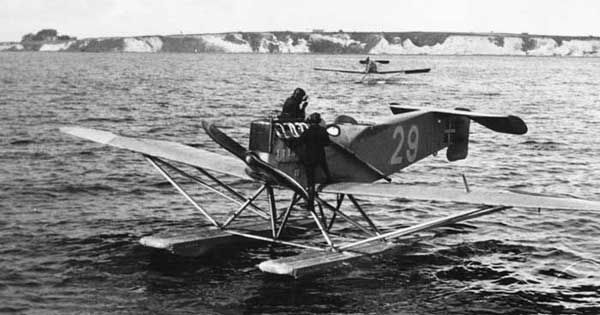
Paper Model Airplanes
Pfalz D.III
In late 1916 and early 1917 the Pfalz company built under licence the L.F.G. Roland D-I and D-II single-seater biplanes, which were designated the Pfalz D-I and D-II.
The factory's first original D-class design was brought out in the summer of 1917: the D-III, a trim little machine with a finely streamlined fuselage. The power unit was the 160 h.p. Mercedes engine, installed in a rather sharply pointed nose; much of the cylinder block protruded and was enclosed in detachable metal cowlings. The airscrew had a small pointed spinner. A short horizontal exhaust pipe, which appeared in many shapes, discharged on the. starboard side. The raked wings, of unequal span and chord, had hollow box spars and plywood ribs inter spaced with false ribs of ash.
The top wing was flat, the bottom wing had two degrees of dihedral; both structures were fabric-covered. A gravity fuel tank and the radiator balanced each other on the port and starboard sides of the centre section, which had a semicircular cut-Out. Balanced equal-chord ailerons were fitted to the upper plane. Splayed wooden interplane struts and wooden centre-section struts of a flattened inverted U shape were fitted.
The monocoque fuselage was constructed of two thin layers of three-ply wood round a wooden frame of longerons and formers. and then covered with fabric, doped and varnished. Fin and tall-planes were of ply-covered wood; the latter was of inverted aerofoil section. a common device of the time to assist recovery from dives. The rudder was framed in steel tubing; both it and the wooden one-piece elevator were fabric covered.
Vees of steel tubing formed the undercarriage, and a small fairing covered the axle and spreader bars. The unusual 'hockey-stick' tail-skid pivoted at the rear end of the fuselage; its forward end was sprung with elastic cord. Twin Spandau guns were fitted to fire through the revolving airscrew; on early models these were mounted inside the fuselage with only their muzzles protruding; later they were placed on top to facilitate maintenance. A special D-III. probably intended for balloon attack, carried three guns.
The first production models reached the front in September 1917; many Jagdstafleln had mixed equipment at this period and it was not unusual for the new D-III's to fly in the same formation with Fokker Dr-.Is and Albatros D-Vs. Unfortunately the performance of the Pfalz did not match its sleek appearance. Its maneuverability and rate of climb were poor, so that it tended to be given to the inferior pilots and the beginners. On the other hand, the D-III's strength in a dive and its excellent forward view recommended it to those who specialised in 'balloon busting'. Its reputation was further damaged in 1918 when crashes were attributed to negligence in construction.
An improved model, the D-IIIa. had the 180 h.p. Mercedes engine, rounded tips to the lower wings and a curved tail-plane of increased area. Early in 1918 Pfalz production was increased, and as availability was then more important than performance. many D-III's were sent to the Jostas. Largely for want of a better alternative, the Pfalz continued to operate until mid-1918. It was looked upon by the average S.E.Sa. Camel and Spad pilot as being easy meat'.